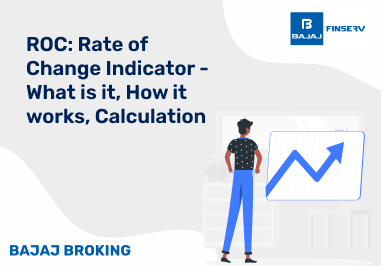In simple words, stock valuation means finding out the real worth of a company’s share. As an example, if you plan to purchase a company stock, you would not rely solely on the price on the screen. You would want to know whether that price is a reasonable value. The valuation process to determine the true value is called stock valuation.
Consider this. If you were to buy a second-hand mobile phone, you wouldn't just look at the price. You would look at how new it is, its features, and whether it was worth the money. Stock valuation works in the same way – but for companies.
Understand the Meaning of Stock Valuation
Whenever you try to find out the value of a company’s share, you are basically doing stock valuation. Now, the market price of a stock is what people are currently paying for it. But here’s the twist – just because people are paying that much doesn’t always mean that’s its true value.
As an investor, your job is to figure out whether the stock is undervalued (worth more than its market price) or overvalued (priced higher than what it’s really worth).
If the stock’s true value is higher than the current market price, you’d want to buy it.
If the stock’s true value is lower than the current market price, you’d likely sell it.
This way, stock valuation helps you make smarter choices instead of just guessing.
Types of Stock Valuation
There are mainly two types of stock valuation. Let’s break them down:
1. Absolute Valuation
This method looks only at a company’s own financial data – no comparisons with others. It checks things like expected cash flow, profits, and dividends. It’s good for companies that have steady earnings.
Some models used here are:
Discounted Cash Flow (DCF) – future cash flows brought to present value.
Dividend Discount Model (DDM) – calculates value based on dividends.
Asset-based Valuation – focuses on the company’s assets and debts.
2. Relative Valuation
This one compares a company with other similar companies in the market. It uses ratios like:
Price-to-Earnings (P/E)
Price-to-Book (P/B)
3. EV/EBITDA
It basically helps you see if the stock is cheap or expensive compared to its peers. This is the method most beginners find easy and practical.
Methods of Stock Valuation
Here are some popular methods you’ll come across:
Dividend Discount Model (DDM):
This works only for companies that pay dividends regularly. The idea is – the company’s value equals the present value of all its future dividends.
Discounted Cash Flow (DCF):
Here, you look at the company’s future cash flow (money coming in) and then calculate what that’s worth today. This gives a fair value of the company.
Price-to-Earnings (P/E) Ratio:
This is a quick comparison tool. It shows how much investors are willing to pay for every rupee of a company’s profit.
If a company’s P/E is lower than its competitors, it may be undervalued → a good buy.
If the P/E is higher, it might be overpriced → better to avoid or sell.
Stock Comparable Analysis
This is another way to compare one company's results with other companies in the same industry. You can look at the profits, revenues, cash flow, and book value.
For example, if the P/E ratio for Company A is considered valuable due to being lower than similar companies, an investor could evaluate Company A for potential undervaluation. But here’s the catch – you should compare companies that are almost the same in size and structure, otherwise the comparison won’t be fair.
Advantages and Disadvantages of Stock Valuation
Here’s a simple table to help you see the pros and cons:
Advantages
| Disadvantages
|
Helps you find if a stock is undervalued or overvalued.
| No method is 100% accurate, results can differ.
|
Guides you in making smart buy/sell decisions.
| Needs time, knowledge, and proper financial data.
|
Lets you compare companies fairly.
| External factors like market mood or economy can affect accuracy.
|
Reduces risk of blind investing.
| Some models (like DCF) are tricky for beginners.
|
P/E Ratio Drives Stock Valuation
One of the most common tools investors use is the P/E ratio. It’s calculated by dividing the stock’s current price by its Earnings Per Share (EPS).
But remember – a P/E ratio only makes sense when you compare companies from the same industry. Comparing a bank’s P/E with a tech company’s won’t give you any real insight.
As a novice, don't focus on a single method. Try a range of methods like P/E, DCF, and comparables. With more practice, you will be increasingly better at recognising good opportunities.
Conclusion
So, stock valuation is nothing more than figuring out the real worth of a company’s share. You don’t have to be a finance wizard to get started – just curious and willing to learn.
Consider stock valuation as your magnifying glass, allowing you to look beyond the shiny market price and determine whether you should buy, hold, or sell a stock, but only after careful consideration. With more practice, you'll eventually start thinking like a professional investor.













